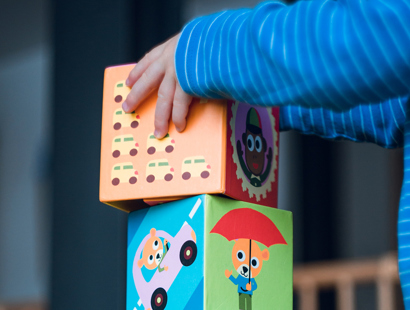
Contact for children being adopted—a change?
Senior associate James Sandiford considers a recent Court of Appeal judgment exploring when children placed for adoption might maintain direct contact with siblings who are not being adopted.
The Court of Appeal gave its judgment in the case of Re S (Re S (Placement Order Contact) [2025] EWCA Civ 823) examining the circumstances in which the family court might be expected to make an order requiring a child placed for adoption to have contact with a sibling who is not being adopted.
Direct contact between adopted children or children placed for adoption with their birth families is a much-debated issue. Over the past two decades, informed by a growing body of academic research, there has been a shift away from the idea of ‘closed adoptions’ – in which children once adopted maintain few, if any, links to their families of birth – toward adoptions where there is some level of contact. This is commonly indirect contact through letters and cards but increasingly involves direct face-to-face contact. In Re S, the Court of Appeal considered figures from Adoption UK that in 2024, 97% of new adoptive families had arrangements for indirect contact, and 45% had arrangements for some direct contact, whether with birth parents or siblings.
People wishing to adopt children who have previously been taken into care are expected, and trained, to be open to contact with birth families, as long as it is safe and in the children’s best interests. This is because research highlights the benefits for adopted children in terms of their well-being, sense of identity, and the stability of their adoptive families when links to their birth families are maintained.
Despite this, there has been relatively little change in the court’s approach to making orders for contact with birth families when children are to be adopted. In 2019 Sir Andrew McFarlane, President of the Family Division, approved the approach that “it will only be in an extremely unusual case that a court will make an order stipulating contact arrangements to which the adopters do not agree” (Re B (A Child) (Post Adoption Contact) [2019] EWCA Civ 29).
Whilst Re S does not revise or change the law, it reiterates the requirement for family court judges to focus on what bespoke contact arrangements will be in the best interests of each and every child being placed for adoption and, arguably, may point to a likelihood of contact orders being made more often.
The case
The case centred on whether the family court should make an order for direct contact between a boy aged two, ‘S’, who is to be placed for adoption and his brother ‘R’, aged eight, who is in long-term care. Both children had been removed from their parents’ care in proceedings brought by the local authority because the judge was satisfied that they were at risk of significant harm from their parents. Whilst R is to stay in long-term care, the court made a placement order for S. This means the local authority can start the process of finding prospective adopters for him, matching S with them, and placing him in their care. All being well, the prospective adopters would then apply to the court for an adoption order to become S’s legal parents.
The local authority’s plan for S, supported by his court appointed guardian, was that once he was placed for adoption he would have indirect contact with R, but also direct contact twice a year so that the sibling relationship could continue.
The court approved that plan. However, the question was whether the judge should make an order under section 26 of the Adoption and Children Act 2002, requiring the prospective adopters to ensure direct contact between S and R, or whether there would an expectation of direct contact, that is not legally enforceable, meaning it would ultimately be a decision for the prospective adopters.
The judge decided there should not be an order for contact between R and S. His main reason was that an order requiring that there must be direct sibling contact would make it harder to find adopters for S, reducing the chance that he could be adopted at all. The parents appealed.
The decision
Sir Andrew McFarlane, giving the court’s judgment, did not consider the judge was wrong to refuse a contact order between S and R on the particular facts of their case and refused the appeal.
Although the appeal was unsuccessful, the Court of Appeal gives important guidance for the family court to consider when determining future contact arrangements which are required in every case where a child is to be placed for adoption, as follows:
- There needs to be a distinction between direct contact with siblings and direct contact with birth parents. The considerations for and feasibility of direct contact may be quite different for each.
- The risk of an order for contact deterring potential adopters cannot be the determining factor in every case. There will be cases – like Re S – where the risk of deterring adopters will lead the court to decide there should be no order for direct contact, but the court will need to see evidence that this is a real risk for children and not just a theoretical or generic risk.
- Although a contact order made at the placement order stage of the adoption process will only remain in effect until an adoption order is made, the court must consider the role contact at this time will have in the child’s overall, life-long welfare requirements. It other words it might helpfully be thought of as part of a ‘road map’ for contact looking forward into the longer term.
- It may be helpful for the court to think about contact after a placement order in two ‘phases’: the first from when a placement order in made to the point a when child is placed with prospective adopters, and the second starting from when he or she is placed with those prospective adopters.
- The court may consider taking a more flexible approach to post-placement order contact: perhaps making an order that allows for some flexibility in birth family contact depending on how things are going as the child settles with prospective adopters, or, for example, setting a minimum level of contact; or it might consider in cases where no order is made recording its views and expectations for contact as non-legally binding recitals to the order.
Adopters and those supporting them and advising them will look with interest to see what, if any, change in how judges approach post placement (and post adoption) contact comes about following this decision.
About James
James Sandiford is the family and children team, specialising in children law. He advises on many matters including public law care proceedings brought by social services, applications to adopt children as well as issues that can follow adoption.
Get in touch
If you would like to speak with a member of the team you can contact our children law solicitors by telephone on +44 (0)20 3826 7528 or complete our enquiry form.







